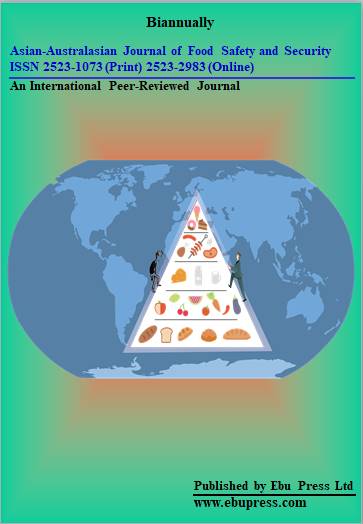Md. Sultan Ahmed, Mohammad Dalower Hossain Prodhan, Afroza Begum, Marina Afroze and Nirmal Kumar Dutta
Eggplant and hyacinth bean are essential vegetable crops due to their nutritional value but are highly susceptible to various insect pests. Farmers often apply pesticides indiscriminately, disregarding the recommended pre-harvest intervals. This practice raises concerns about potential pesticide residue contamination in vegetables. The present study aimed to assess pesticide residues in eggplant and hyacinth bean. Samples were collected from eight regions of Bangladesh. Pesticide residues in the samples were assessed through gas chromatography, utilizing both a flame thermionic detector (FTD) and an electron capture detector (ECD). Among the total analyzed samples, a significant portion was found to be contaminated, with residues of cypermethrin, diazinon, quinalphos, fenitrothion, and malathion detected in over half of the samples. Among these, 15 samples (30%) exceeded the maximum residue limit (MRL) set by FAO/WHO. From the 26 eggplant samples, 15 contained residues of cypermethrin, quinalphos, and diazinon, with 7 samples (26.92%) exceeding MRLs. Four samples had cypermethrin residues ranging from 0.532–0.623 mg/kg, and one sample contained 0.703 mg/kg diazinon, both above MRLs. Additionally, two samples from Bogura and Rangpur had multiple pesticide residues above MRL. Of the 24 hyacinth bean samples, 15 were contaminated with cypermethrin, diazinon, quinalphos, fenitrothion, and malathion. Among these, 8 samples (33.33%) exceeded MRLs with residues ranging from 0.533–0.561 mg/kg for cypermethrin, 0.543–0.610 mg/kg for diazinon, 0.120–0.240 mg/kg for fenitrothion, 0.414 mg/kg for quinalphos, and 0.529 mg/kg for malathion. Two hyacinth bean samples from Rangpur and Jashore contained multiple pesticide residues exceeding MRLs. The current status of pesticide residue contamination in these vegetables is highlighted by this analysis, which also emphasizes that residues over MRLs provide serious health concerns to humans and may result in a number of dangerous disorders.


